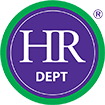The new academic year is a period of change for everyone. Even those who don’t work with children can’t ignore the bustle of youthful activity and heavy traffic at 8am!
However, if you do have health and safety responsibilities for children, you’ve likely been counting down the days to the start of the new term with a mixture of apprehension and excitement.
Finding that practicable balance between keeping children safe and not being too restrictive is not always easy at work – especially in schools.
In August, a newspaper reported on a fifteen-year-old girl who was banned from wearing fake nails on health and safety grounds, despite being on a beautician placement. The ban, which is more a uniform issue than a health and safety one, caused tension with the parents. There is no specific health and safety legislation that prevents wearing fake nails at school. And other schools have banned them also, citing that it leaves pupils unable to hold a pen.
As you can see, sometimes health and safety concerns are attributed to a policy that doesn’t pose a real risk. So it’s always wise to ensure that policies are only attributed to health and safety when they genuinely fall under that category.
Leading sensible health and safety management
Conkers, British Bulldog, and even the use of regular footballs have all received much derided bans in some schools. This highlights a confusion about what the role of health and safety in schools actually is. The government’s website itself states that risk management should be proportionate to the nature of the activities.
We see the hierarchy of control often being overused. It creates an unrealistic health and safety culture in which children don’t learn to manage enough risk themselves.
For the hierarchy of control, think of a pyramid divided horizontally into levels. The top level, where the pyramid is thinnest (and so should be used sparingly) represents a complete ban on an activity. Too often schools resort to this, as it is the quickest and simplest way to eliminate a risk. But this extreme approach should only be used once other options have been properly explored.
The pyramid, broadening towards its base, has other levels which represent less intrusive interventions. At The Health and Safety Dept, we have the tag line: Sensible Safety Solutions. We always like to start by looking at proactive answers first, the ones which would fit lower down this pyramid.
Cascading health and safety responsibility in schools
When managing health and safety in an organisation as large as a school, one challenge is to make sure everyone understands their health and safety responsibilities.
Overall accountability for health and safety lies with the employer – whether that be a local authority, academy trust, governing body or other entity. However, day-to-day responsibility for pupils’ health and safety must adequately cascade to all members of staff, from headteacher or business manager to teaching assistant and beyond.
School trips illustrate how staff work together to ensure a safe environment for children. Those with organisational responsibilities plan a safe route and range of activities with a risk assessment, which can then be signed off by the individual with overall responsibility. And then of course on the day of the trip, assistants and other members of staff read the risk assessment. Everyone involved is aware of any potential risks.
Key legislation
The Health and Safety at Work etc. Act 1974 is the most important piece of legislation for governing health and safety in schools. This is supplemented by specific regulations like the Management of Health and Safety Regulations 1999 which obligate employers to carry out risk assessments.
Consider also The Children Act 2004 which sets out regulations designed to help organisations plan the care and support of children. It requires institutions, agencies or organisations working with children to have clear safeguarding policies.
Keeping records and Ofsted
You are sure to be aware just how important record-keeping is. The new academic year is likely to bring with it new faces. And while you’ve checked qualifications, including first aid, and done DBS checks, do ensure that your record-keeping reflects the checks you’ve made.
That way, when Ofsted comes knocking, you have proof of your organisation’s good practice health and safety measures and records. Earlier in 2019, a school had its Ofsted rating downgraded to “Inadequate” after failing to provide the necessary records. So not providing documentation may put you at risk of fines, bad publicity and a poor Ofsted report.
Looking for competent support from outside of your school
If you are responsible for health and safety in a school, or business which caters to children and want some competent outside H&S support, call us. One of our experienced local consultants can discuss your situation to determine how we can best provide support.
